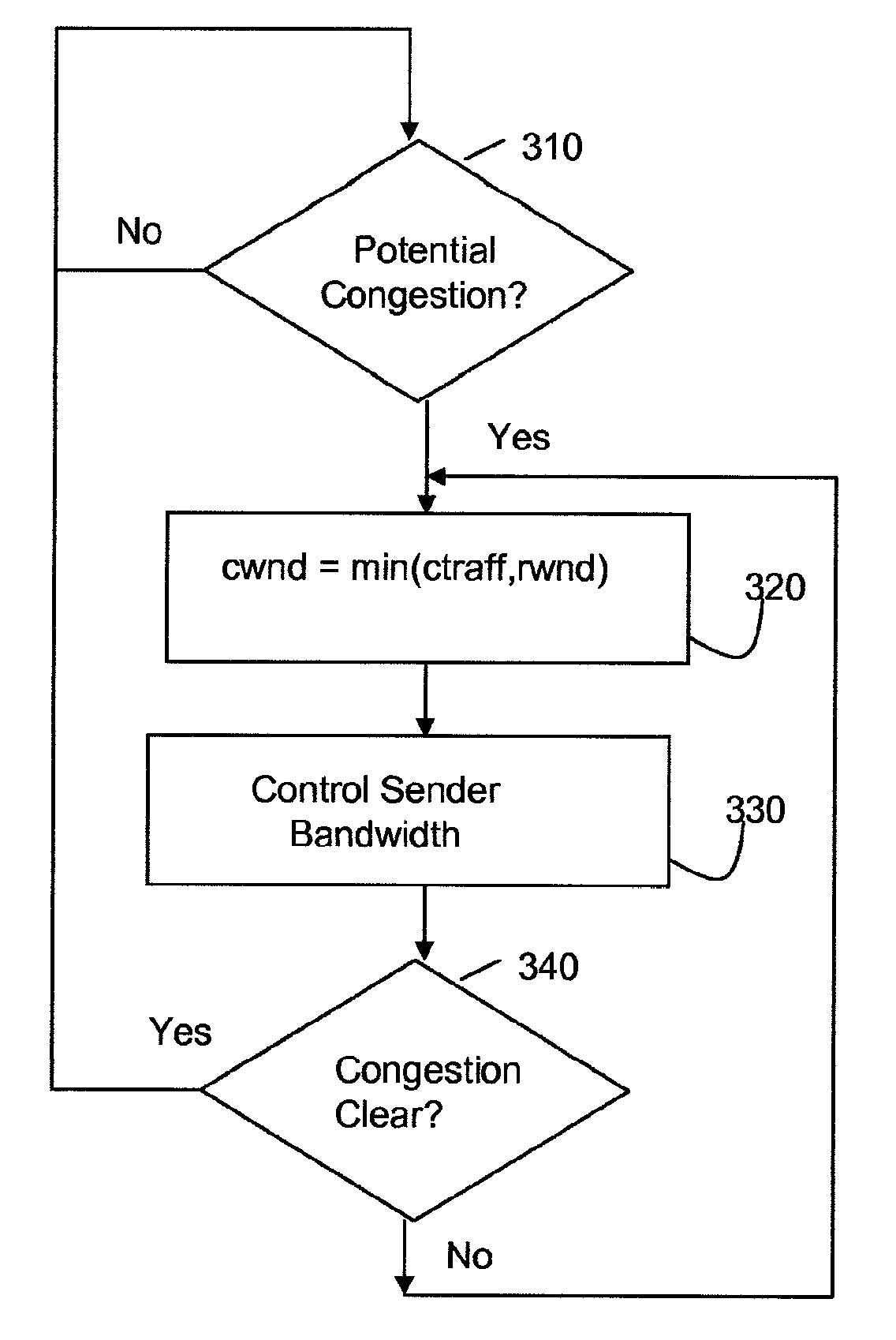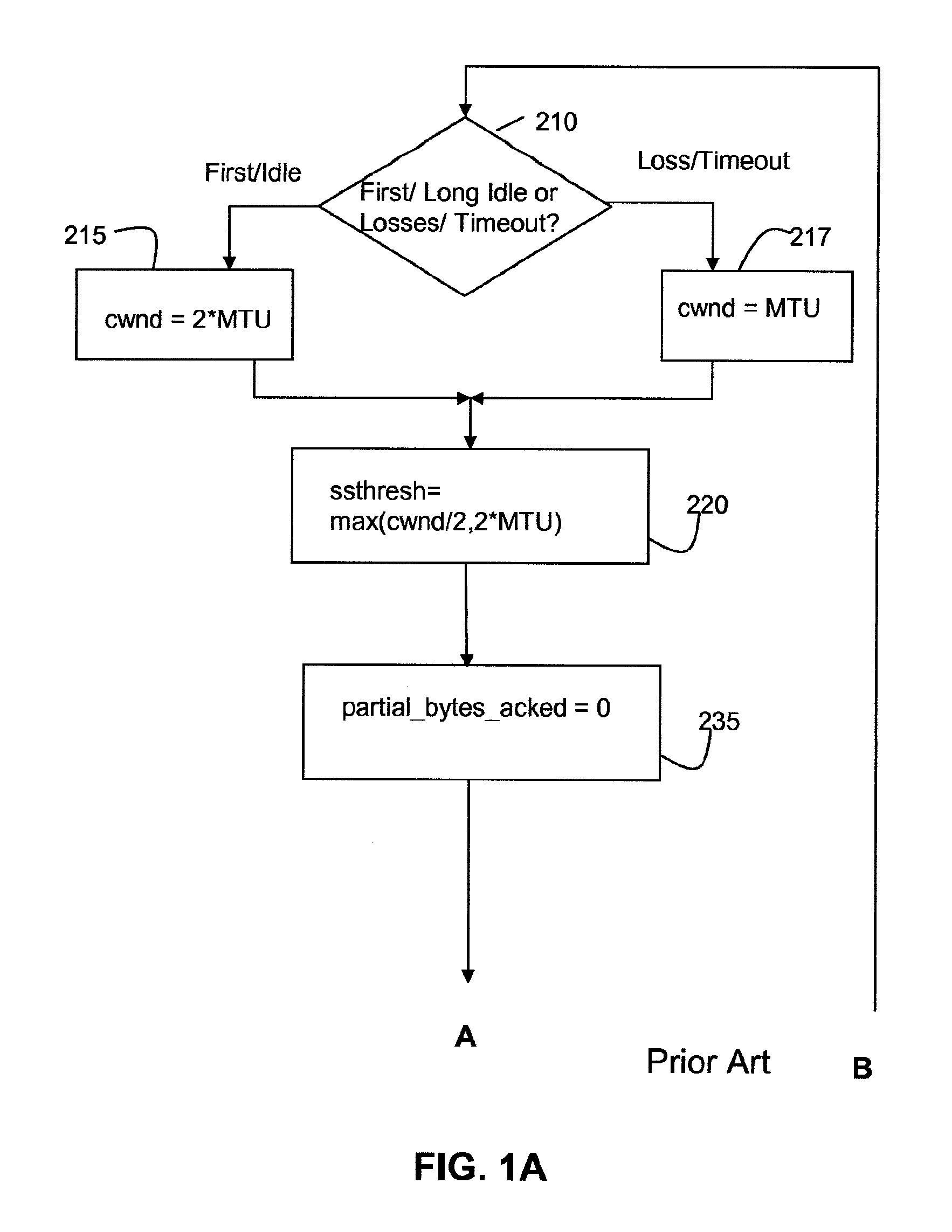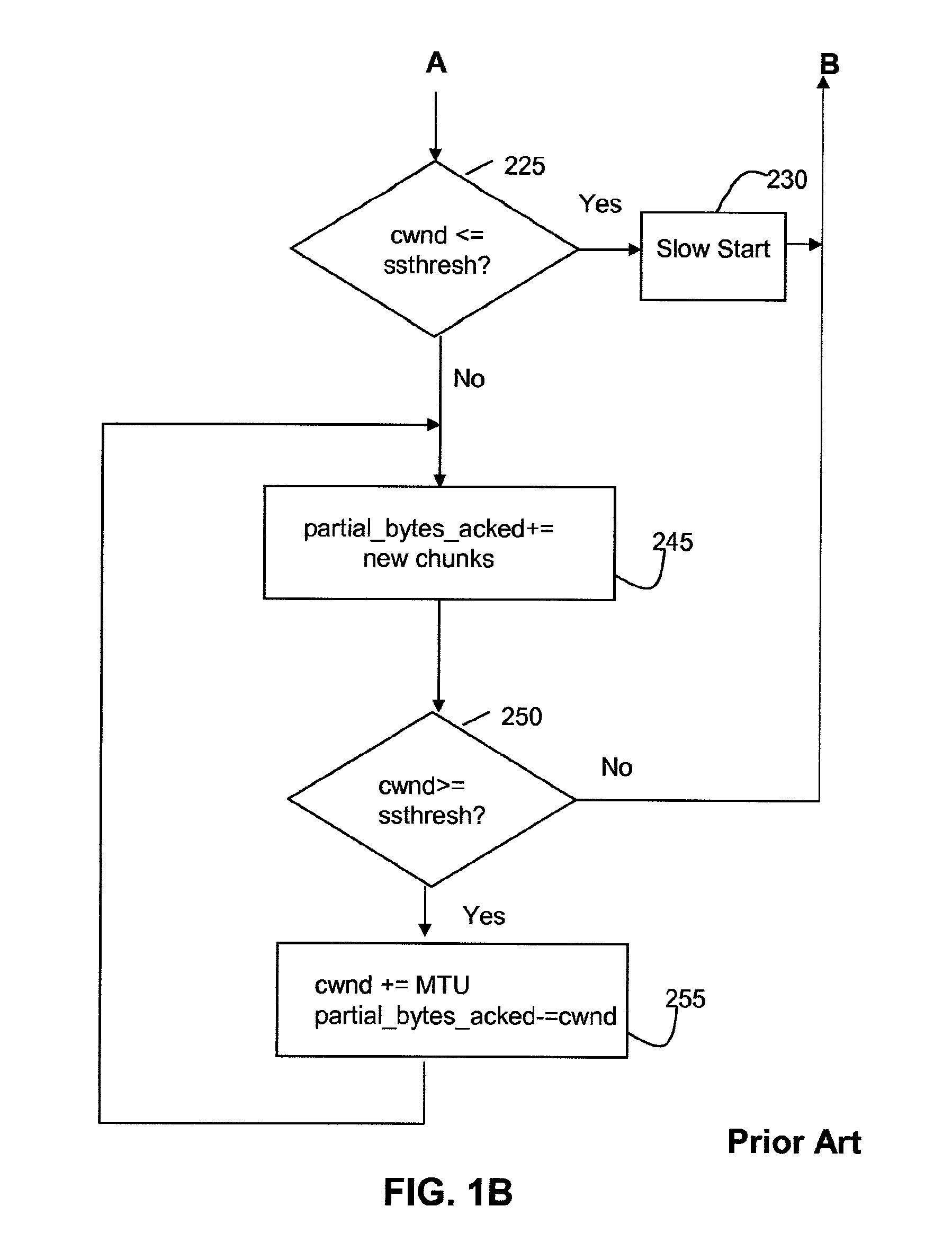Congestion Control for Signalling Transport Protocols
a signalling transport and congestion control technology, applied in the field of digital communications networks, can solve the problems of packet corruption in transmission, packet loss in transit, packet loss in return ack message, etc., to prevent congestion in the network from increasing, reduce bandwidth, and reduce overall traffic
- Summary
- Abstract
- Description
- Claims
- Application Information
AI Technical Summary
Benefits of technology
Problems solved by technology
Method used
Image
Examples
Embodiment Construction
[0022] A preferred embodiment of the present invention uses the Stream Control Transmission Protocol (SCTP) rather than TCP as the preferred transport layer protocol. SCTP is another protocol that can be implemented in the transport layer. Like TCP, SCTP provides a reliable transport service, ensuring that data is transported across the network without error and in sequence. Like TCP, SCTP is a connection-oriented mechanism, meaning that a relationship is created between the endpoints of an SCTP session prior to data being transmitted, and this relationship is maintained until all data transmission has been successfully completed. Unlike TCP, SCTP provides a number of functions that are considered important for signaling transport (although TCP provides signaling transport functionality, it is relatively lacking in robustness and performance), and which at the same time can provide transport benefits to other applications requiring additional performance and reliability relative to ...
PUM
 Login to View More
Login to View More Abstract
Description
Claims
Application Information
 Login to View More
Login to View More - R&D
- Intellectual Property
- Life Sciences
- Materials
- Tech Scout
- Unparalleled Data Quality
- Higher Quality Content
- 60% Fewer Hallucinations
Browse by: Latest US Patents, China's latest patents, Technical Efficacy Thesaurus, Application Domain, Technology Topic, Popular Technical Reports.
© 2025 PatSnap. All rights reserved.Legal|Privacy policy|Modern Slavery Act Transparency Statement|Sitemap|About US| Contact US: help@patsnap.com



